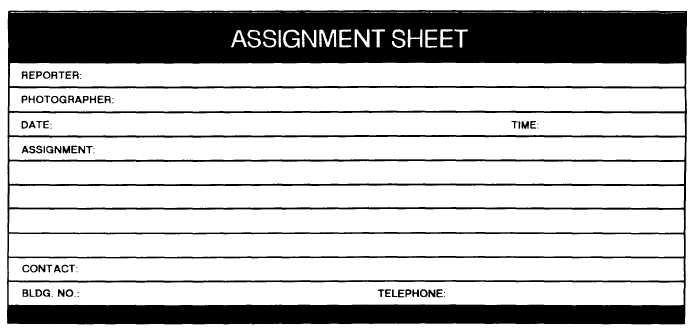In Chapter 1, you were cautioned about the use of
volunteers in managing a public affairs office. This rule
also applies in newspaper staff supervision. Carefully
screen each volunteer and do not count on consistent
contributions.
If you cannot enlist the services of a part-time
cartoonist, the monthly Navy Editor Service (NES)
contains a wide variety of line art you can use. Order
NES from the Navy Internal Relations Activity (NIRA)
in Washington, DC. It is not provided unless requested.
PHOTOGRAPHY
Most CE or funded newspaper staffs can get limited
photographic support from the base imaging facility.
However, the availability of funds and personnel will
dictate just how much support you can receive. With this
in mind, it is absolutely imperative that every newspaper
staff member use and practice basic photography skills.
Even if the imaging facility can provide limited
support to your staff, you must make sure your staffers
are given the opportunity to supplement their stories
with their own photographs. Above all, do not subscribe
to the theory that the imaging facility is your catch-all
“safety net.”
Make sure your newspaper is as
self-sufficient as possible in photography.
Depending on the available public affairs funds, you
can take this a step further by setting up a small photo
lab right in your office.
MAKING ASSIGNMENTS
Because the associate editor is responsible for the
day-to-day operations of the newspaper, the task of
making story and photographic assignments also falls
on his shoulders.
After identifying an assignment with the editor, the
associate editor should consider the jobs in progress
(stories, layouts, photography, etc.) and any additional
factors (leave, TAD, sickness, training, and so on)
before assigning a job to an individual. The goal here is
to spread the newspaper workload as evenly as possible
so no one is backed up to a point of stagnation.
Some associate editors verbally inform each staff
member of a new assignment. You can improve upon
this method by using the staff assignment sheet shown
in figure 7-2. You can continue to give your verbal
instructions to the writer or photographer, but now he
has a tangible record to fall back on if a question comes
up. This will eliminate repeating the assignment
instructions several times, which can lead to misinter-
pretation.
Figure 7-2.-Reporter assignment sheet.
7-8


